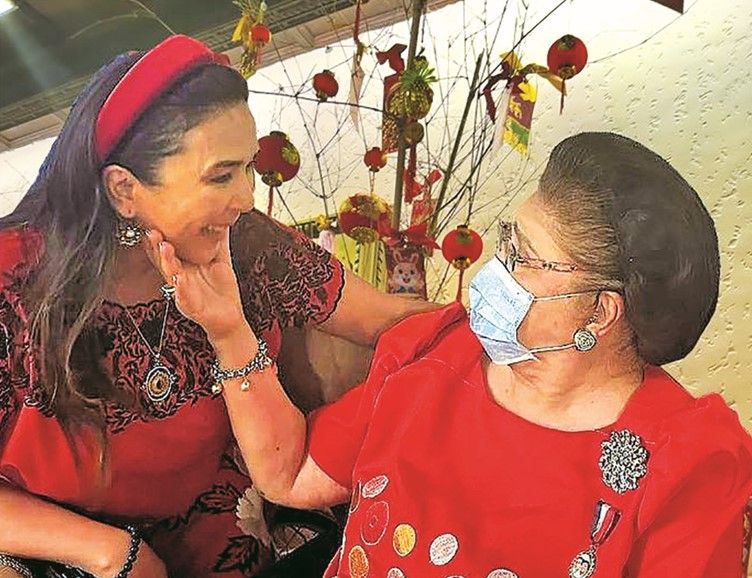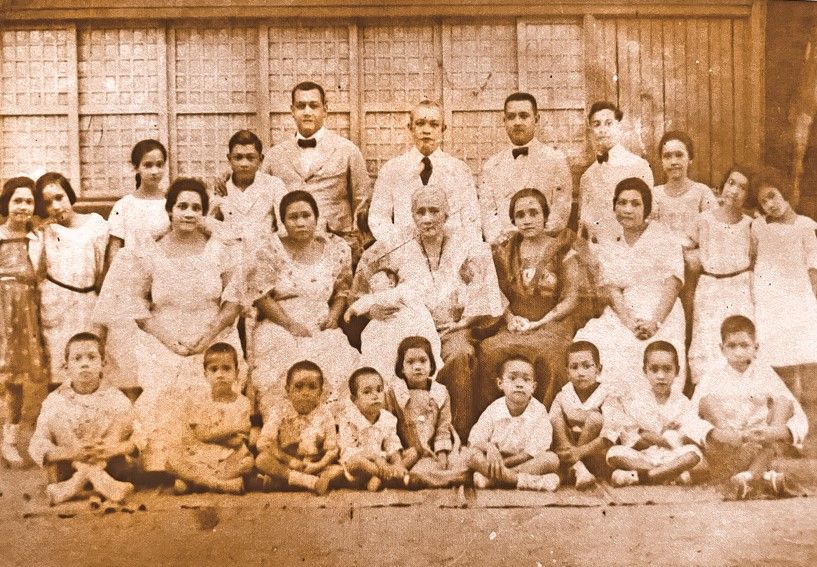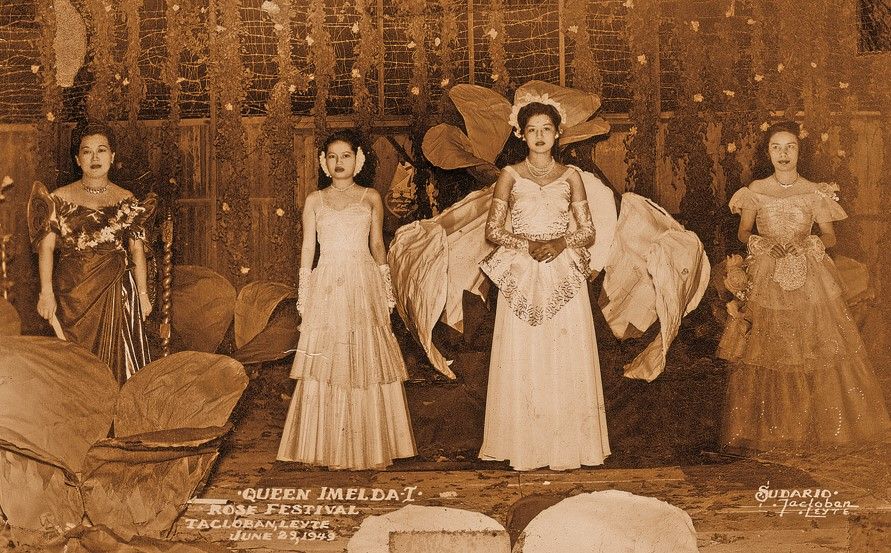Imelda Marcos turns 95
Her remarkable journey has certainly led her to become an iconic and influential figure in our country's history
Our family matriarch Imelda Romualdez Marcos turns 95 in a few days, on July 2, to be exact. She was born Imelda Remedios Visitacion Trinidad Romualdez to Vicente Orestes Romualdez and Remedios Trinidad in 1929. My aunt’s life is a testament to resilience and determination in pursuit of the “True, the Good, and the Beautiful.” Her remarkable journey has certainly led her to become an iconic and influential figure in our country’s history.

Over the past few days, revisiting my aunt’s journey, I have been reminded of the depth of her influence not only on the clan Romualdez but on our nation as well. Her dedication to cultural enrichment, diplomatic endeavors, and her unwavering commitment to public service remains unrivaled.
Most of the first eight years of my aunt’s life was spent on General Solano Street in San Miguel, Manila, adjacent to San Miguel Church, not far from Malacañan Palace. Hers was a childhood filled with memories of love as her mother Remedios, a skilled bordadera and seamstress, decorated their home with handmade tablecloths and curtains swaying along with the gentle breeze. My aunt, along with her younger siblings, wore clothes lovingly sewn by their mother and carefully stored in their big aparador. Decades later, my aunt would recount, after her mother’s untimely death in the summer of 1938, she would go to the aparador to breathe in the scent of memories of her mother’s love.

The loss of her mother developed in her a sense of responsibility. In her mother’s death, she was deprived of one of the closest of human kinships, the mother-daughter relationship. “It means developing a natural resilience, a strong character in meeting vicissitudes in life,” she added. “And inner strength and built-in fortitude that enabled me to brave the adversity and crisis of her destiny.” Most important, the loss of her mother became the inspiration of her philosophy of mothering, which would fuel her passion throughout her life as a public servant.
In recent days, my FB feed slowly began to be inundated with appeals for help regarding missing children, mostly in their teens and mostly female. According to the Philippine National Police in 2022, there were 1,047 reported cases of missing persons in the country, of whom 268 were children below 18 years old. Of those reported missing, 712 were eventually found and returned to their families.
According to some reports, as many as 35,000 Filipinos go missing every year. Cited among the reasons people go missing are domestic violence as well as family disputes, poverty and lack of economic opportunities, natural disasters, mental health issues, runaways, human trafficking, and kidnappings. When my aunt was a child, she was kidnapped, not once but twice!

The first time was by a childless couple who were caretakers of a building near Malacañan Palace. They were beguiled by my aunt’s cuteness and took her in when she had wandered away from their house on General Solano Street. A search party was launched and my aunt was found.
The second time, my aunt recounted, an old woman she would greet at church regularly lured her with candy. She was taken to an apartment with a long wooden staircase and a living room with some toys she ended up playing with. The woman played with her and, when my aunt noticed it was getting dark, she asked the woman to take her home. The woman, my aunt recounted, pretended not to hear her so, she started to cry. Her cries were heard and soon after her parents along with a policeman came running up the steps, barging into the apartment. There was a search for my missing aunt when they heard her loud cries from the street. Both times, my aunt was unharmed.
Being taken away was something that haunted her even during World War II when she was growing up in Tacloban, Leyte. My aunt grew tall and with her good looks attracted attention to the point that my grandfather had her dress up like a boy and dirty up her face to avoid catching the eye of Japanese soldiers on occupied Leyte Island.
My grandfather and my aunt were most grateful to a Japanese couple who were their neighbors on Gran Capitan Street in Tacloban, that my aunt was spared the unfortunate fate of being taken to serve as a comfort woman. Every time the military truck came to take young Filipinas away, the couple would hide my aunt who was then in her early teens in their home. They would also share provisions with my dad’s family when they had extra to spare. This generosity was never forgotten. In fact, after the Battle of Leyte Gulf in October 1945, the fiercest naval battle in modern history, my grandfather looked into the welfare of their Japanese neighbors.

Unfortunately, they did not survive the bombing of American forces during the battle. To this day, my aunt and my dad would recall the couple Odas’ kindness.
My aunt described her days living in Tacloban before the war from 1938 up to the time she moved to Manila in 1952 as “paradisiacal.” My grandfather sensing imminent war in 1938 decided to take his children, who had just lost their mother, back to Leyte. She went to the Holy Spirit Academy for grade school up to the first years of high school before the war broke out. She grew tall and into beauty. Her height misled many admirers, thinking she was much older. In fact, she got her first marriage proposal at 14, which made my grandfather realize he and his sons needed to start looking out for my aunt to protect her from unscrupulous men. After the war, my aunt ended up continuing her high school at the Leyte High School, but she returned to the Holy Spirit Academy in Tacloban to finish her secondary education in 1948. Coincidentally, the commencement speaker then was an up-and-coming congressman from Ilocos Norte, Ferdinand E. Marcos. When asked if she felt any inkling of a future with him, my aunt pointed out that she was just 18 and Marcos was 30!
My aunt entered university at St. Paul’s College of Tacloban, formerly called the Tacloban Catholic Institute, co-founded by my grandfather’s brother Norberto Romualdez in 1929. When my aunt started her studies, my lolo was the dean of law at the college. My aunt took up education and graduated with a Bachelor of Science in Education, major in history in 1952. Throughout her college life as well as part of high school, she taught first-graders at the Chinese School in Tacloban. When she started university, her name was forwarded as a candidate for the Rose of Tacloban title, which she won in 1949.
Tune in next week for Part II of Imelda Romualdez Marcos’ life story, lived with passion and purpose. I write this, with hope, leave my readers with a deeper understanding and appreciation of my aunt’s remarkable legacy as we celebrate her 95th year on earth.
Happy Birthday, Auntie Meldy!